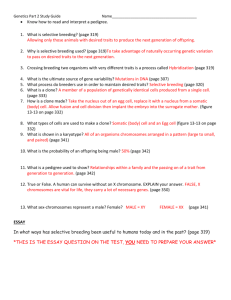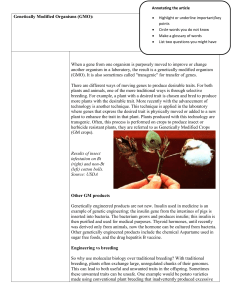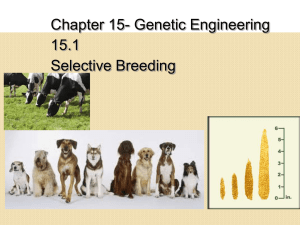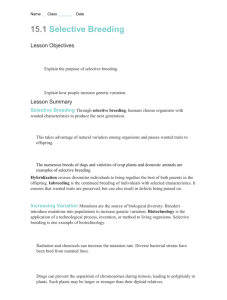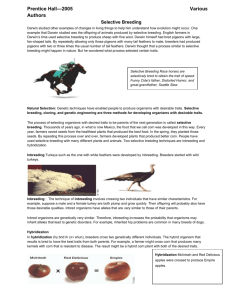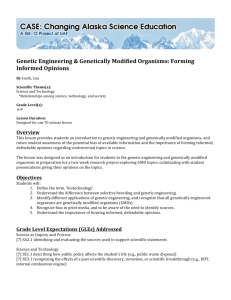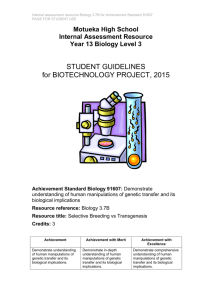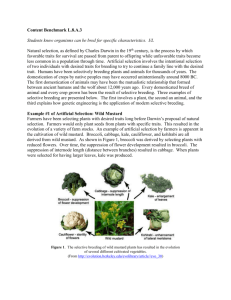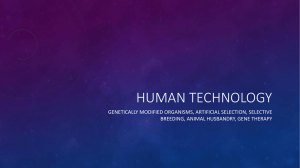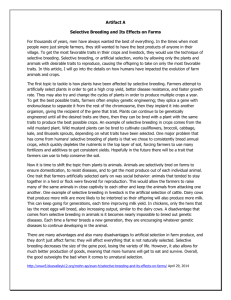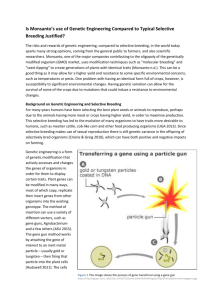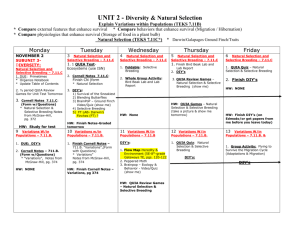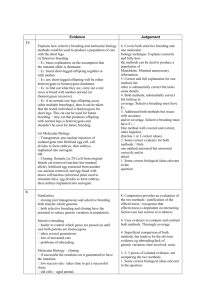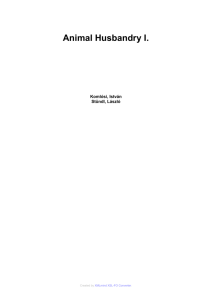What Are GMO`S
advertisement
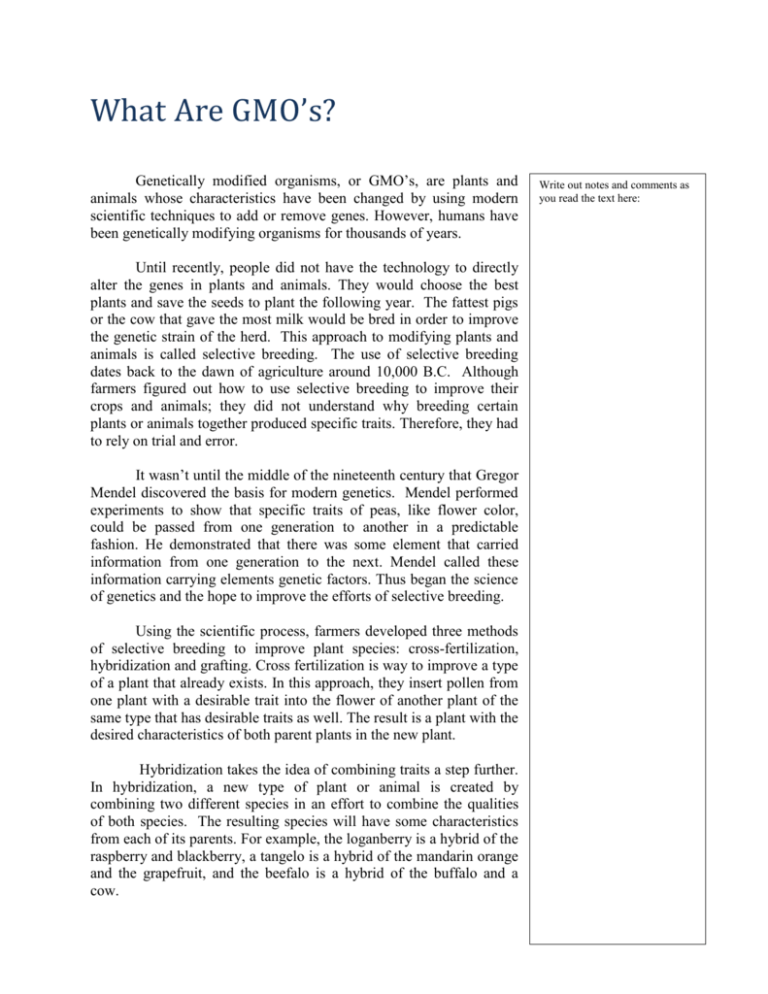
What Are GMO’s? Genetically modified organisms, or GMO’s, are plants and animals whose characteristics have been changed by using modern scientific techniques to add or remove genes. However, humans have been genetically modifying organisms for thousands of years. Until recently, people did not have the technology to directly alter the genes in plants and animals. They would choose the best plants and save the seeds to plant the following year. The fattest pigs or the cow that gave the most milk would be bred in order to improve the genetic strain of the herd. This approach to modifying plants and animals is called selective breeding. The use of selective breeding dates back to the dawn of agriculture around 10,000 B.C. Although farmers figured out how to use selective breeding to improve their crops and animals; they did not understand why breeding certain plants or animals together produced specific traits. Therefore, they had to rely on trial and error. It wasn’t until the middle of the nineteenth century that Gregor Mendel discovered the basis for modern genetics. Mendel performed experiments to show that specific traits of peas, like flower color, could be passed from one generation to another in a predictable fashion. He demonstrated that there was some element that carried information from one generation to the next. Mendel called these information carrying elements genetic factors. Thus began the science of genetics and the hope to improve the efforts of selective breeding. Using the scientific process, farmers developed three methods of selective breeding to improve plant species: cross-fertilization, hybridization and grafting. Cross fertilization is way to improve a type of a plant that already exists. In this approach, they insert pollen from one plant with a desirable trait into the flower of another plant of the same type that has desirable traits as well. The result is a plant with the desired characteristics of both parent plants in the new plant. Hybridization takes the idea of combining traits a step further. In hybridization, a new type of plant or animal is created by combining two different species in an effort to combine the qualities of both species. The resulting species will have some characteristics from each of its parents. For example, the loganberry is a hybrid of the raspberry and blackberry, a tangelo is a hybrid of the mandarin orange and the grapefruit, and the beefalo is a hybrid of the buffalo and a cow. Write out notes and comments as you read the text here: Grafting is the process of attaching a fruit bearing sprout of one type of tree to the trunk of another. For instance grafting the sprout of an apple tree that produces lots of fruit to a dwarf apple tree; in this way more apples are grown in less space. Grafting is also sometimes used when a farmer wants to change the type of fruit grown in his orchard. It is often faster and more cost effective to graft new stock onto the existing trees than to replant an entire orchard and wait for the trees to bear fruit. However there are problems with traditional methods of improving plants and animals. Not all species can be crossed with another even though they both have desired traits. Another issue is that there is no guarantee that the desired trait will be passed on to every offspring, and it is possible that a negative trait will be passed on along with the desired one. Thus scientists set out to find other, more predictable ways of modifying plants and animals. By the mid-1980s, scientists started to change the genes in the cells directly, creating genetically modified organisms (GMOs) by the process of genetic engineering. There are two main advantages to creating GMOs in this way. First, it takes much of the guesswork out of the breeding process. Instead of mating two plants or animals with desirable traits and hoping the offspring gets the best of both. Scientist can choose exactly which traits they want the new organism to have. Secondly, natural change is a slow process. It takes many generations of breeding the best to the best in order to produce significant improvements. The process is much faster if scientists alter the genes of organisms so that the organisms possess the trait that is desired. Plants are altered to resist certain types of herbicides and pesticides as well. The crops that are genetically modified in this way are: soybeans, corn, canola and sugar beets. These plants are used extensively in feeding livestock and food production, and can be found in most processed food. Other crops such as wheat have been genetically modified, however they are not approved by the FDA at this time. To sum up this short history of genetic modification, we can see that selective breeding was the slow but sure method used for thousands of years. While genetic engineering seems to be the progressive way of the future. Write out notes and comments as you read the text here: Read Like a Science Detective: What Are GMO’S 1. What does GMO stand for and describe what they are. ________________________________________________________________________ ________________________________________________________________________ 2. Give two examples of how farmers have been manipulating their product for centuries 3. How is selective breeding similar to genetic engineering? __________________________________________________________________ __________________________________________________________________ 4. How is selective breeding different than genetic engineering? __________________________________________________________________ __________________________________________________________________ 5. Explain what hybridization is. __________________________________________________________________ __________________________________________________________________ 6. What were the problems with traditional methods of improving plants and animals? _____________________________________________________________________ _____________________________________________________________________ 7. What two advantages did scientists start to give to farmers in the mid-1980s? _____________________________________________________________________ _____________________________________________________________________ 8. Describe how GMOs are currently being used and give two examples of crops and what these crops are used for. _____________________________________________________________________ _____________________________________________________________________ _____________________________________________________________________
